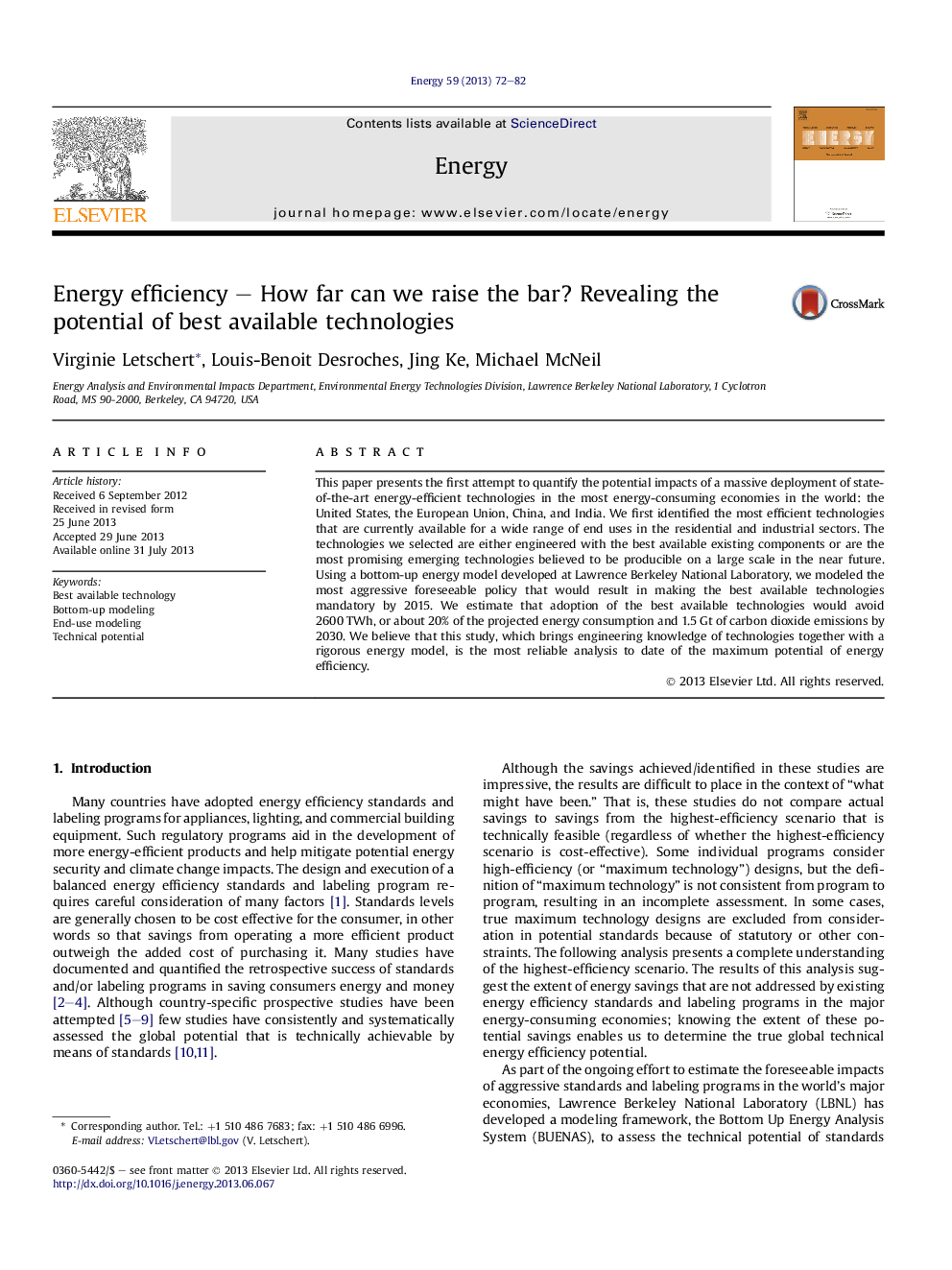| Article ID | Journal | Published Year | Pages | File Type |
|---|---|---|---|---|
| 8079188 | Energy | 2013 | 11 Pages |
Abstract
This paper presents the first attempt to quantify the potential impacts of a massive deployment of state-of-the-art energy-efficient technologies in the most energy-consuming economies in the world: the United States, the European Union, China, and India. We first identified the most efficient technologies that are currently available for a wide range of end uses in the residential and industrial sectors. The technologies we selected are either engineered with the best available existing components or are the most promising emerging technologies believed to be producible on a large scale in the near future. Using a bottom-up energy model developed at Lawrence Berkeley National Laboratory, we modeled the most aggressive foreseeable policy that would result in making the best available technologies mandatory by 2015. We estimate that adoption of the best available technologies would avoid 2600Â TWh, or about 20% of the projected energy consumption and 1.5Â Gt of carbon dioxide emissions by 2030. We believe that this study, which brings engineering knowledge of technologies together with a rigorous energy model, is the most reliable analysis to date of the maximum potential of energy efficiency.
Related Topics
Physical Sciences and Engineering
Energy
Energy (General)
Authors
Virginie Letschert, Louis-Benoit Desroches, Jing Ke, Michael McNeil,
